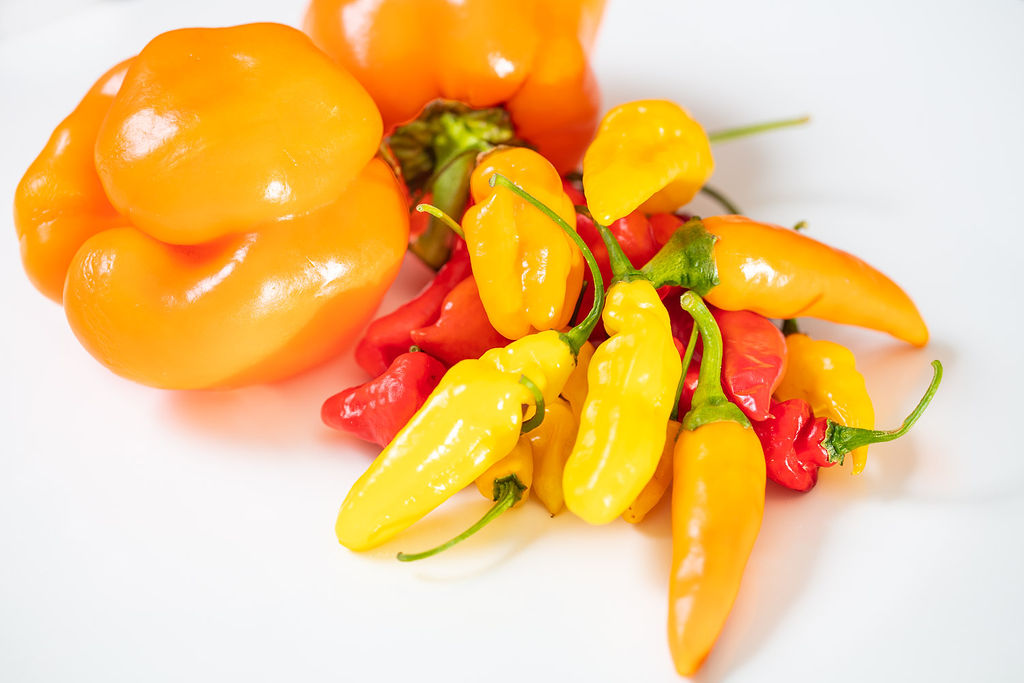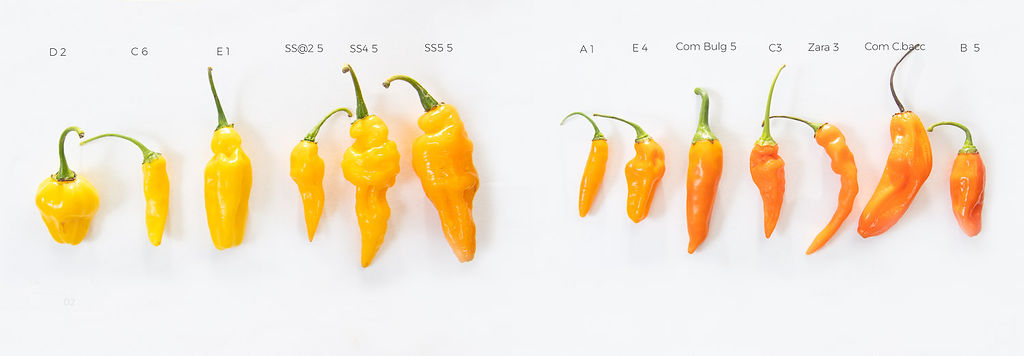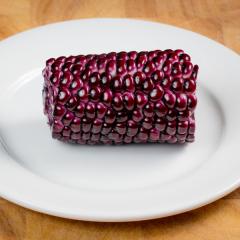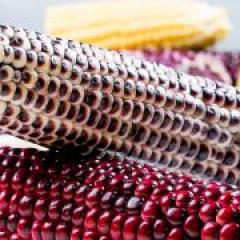First carrots and now capsicum have been identified as good for your eyes – and it is the nutrient linked to the orange colour that counts.
Just as carrots were found to promote night vision through a nutrient called beta-carotene, now another orange vegetable has been found to be pivotal for eye health.

Research by Associate Professor Tim O’Hare has identified orange capsicums as the richest source of the orange pigment zeaxanthin, which is vital for central vision.
He is now helping to address the lack of zeaxanthin in our diets through research-based at the Queensland Alliance for Agricultural and Food Innovation (QAAFI) and funded by Hort Innovation.
The findings are part of the Naturally Nutritious research program that seeks to increase the level of nutrients in fruit, vegetables and nuts.
Nutrition you can see
A/Prof O’Hare explains: “I’m particularly interested in products that can be visually identified by consumers as containing vital nutrients. A number of nutrients we are interested in for human health are actually pigmented. In most cases, it’s the zeaxanthin itself that gives orange capsicums their vivid orange colour.”
Another example of this is the purple pigment anthocyanin, found in purple sweetcorn.
“With these nutrients, what you see is what you get – the more intensely coloured the product, the more nutrient they contain,” he says.
When it comes to orange zeaxanthin and health, A/Prof O’Hare says the compound accumulates in our macula, at the back of our eyes. It protects against blue light, which is particularly damaging as it can oxidise our photoreceptors, which leads to macular degeneration.
As such, zeaxanthin deficiency leaves eyes susceptible to age-related macular degeneration, which in Australia affects one in seven people over 50 years of age and one in three over 80.
Too much blue light can damage the light receptors (called cones) in the retina that are responsible for high-resolution central vision and colour perception. The more zeaxanthin in your macula, the more blue light is naturally screened from hitting the back of the eye.
A/Prof O’Hare stresses that food is essential to achieve this protection: “Our bodies can’t make zeaxanthin, which means we rely exclusively on dietary sources or on artificial supplements.”

High zeaxanthin
A comparative analysis of different fruit and vegetables identified orange capsicums as the richest source of zeaxanthin. One capsicum (typically 450 grams) was found to contain zeaxanthin levels equivalent to 30 supplement tablets, with 2 milligrams of zeaxanthin the daily recommended dose.
“Each zeaxanthin tablet is roughly equivalent to 10 grams of orange capsicum flesh – that’s how rich the capsicums are in this pigment,” he says. “The trouble at the moment is that orange capsicums are not always available in shops, something we are looking to overcome.”
In contrast, the ‘traffic light’ capsicums – coloured red, yellow and green – contain no zeaxanthin.
The analysis also compared zeaxanthin levels among the different orange capsicum varieties that are available in Australia.
A total of eight orange varieties of capsicum were analysed, with seven all proving to be rich sources of zeaxanthin. The eighth, however, owes its orange colouring to a mix of red and yellow pigment.
“Mix these two colours together and you get a dark orange fruit, but sadly no zeaxanthin,” A/Prof O’Hare says.
Breeding program

At the University of Queensland’s QAAFI institute, PhD candidate Rimjhim Agarwal is working to better understand how orange capsicums accumulate zeaxanthin, with the goal of producing genetic tools to help select and breed for higher zeaxanthin production.
Ultimately, the goal of the research is to make it agronomically viable and profitable for growers to produce more orange capsicums, and to alert consumers to their special health benefit of preserving eyesight – thereby creating demand.
The trick is to coordinate the increase in demand with supply, which includes ensuring that there are no constraints on Australian farms to growing orange capsicums.
A/Prof O’Hare has a tip for consumers who already include zeaxanthin-producing capsicums in their diets:
“Zeaxanthin is fat-soluble, so it’s best served with a helping of olive oil or salad dressing to aid absorption,” he says. “Raw works well, although cooking the capsicum can also help by breaking down the cell walls to better release the zeaxanthin. But don’t overcook them, as overcooking will cause some of the zeaxanthin to break down.”
While zeaxanthin does occur in other vegetables, the levels tend to be quite low. However, A/Prof O’Hare is exploring ways to increase zeaxanthin production in other vegetables and he has produced orange-coloured corn that contains 10 times more zeaxanthin than its yellow counterpart. Even so, it cannot rival the levels found in orange capsicums.
As capsicum and chilli belong to the same species, A/Prof O’Hare is also exploring opportunities to cross the ability to make and accumulate zeaxanthin into chillies. For those who like it hot, one high-zeaxanthin chilli a day could be enough to help stave off macular degeneration.
This project is funded by Hort Innovation, the University of Queensland and the Department of Agriculture and Fisheries, Queensland.
Contact: Associate Professor Tim O’Hare, Plant Physiologist, Centre for Nutrition and Food Sciences, Queensland Alliance for Agriculture and Food Innovation, The University of Queensland, T. +61 7 535 15068, M: 0408 148 049 E: t.ohare@uq.edu.au or Carolyn Martin, QAAFI Communications, E: carolyn.martin@uq.edu.au or M: 0439 399 886.
Photos: High-resolution photos supplied by UQ QAAFI are available for download.
- Ocular benefits could fuel new demand for Aussie capsicum growers, published by Insight, 15 February 2021.
- Orange capsicum a protective key for AMD, published by MiVision - The Ophthalmic Journal, 13 January 2021.
- Orange capsicums help combat blindness but you won't find them easily in shops – ABC news - ABC Far North by Renee Cluff – 12 January 2021.
- Orange capsicums on the menu for long-term eye health – Hort Daily – 1 December 2020.
- Fresh Plaza, ABC News Radio, 3AW Melbourne, MSM.com
The Queensland Alliance for Agriculture and Food Innovation is a research institute at The University of Queensland, established with and supported by the Queensland Department of Primary Industries.





